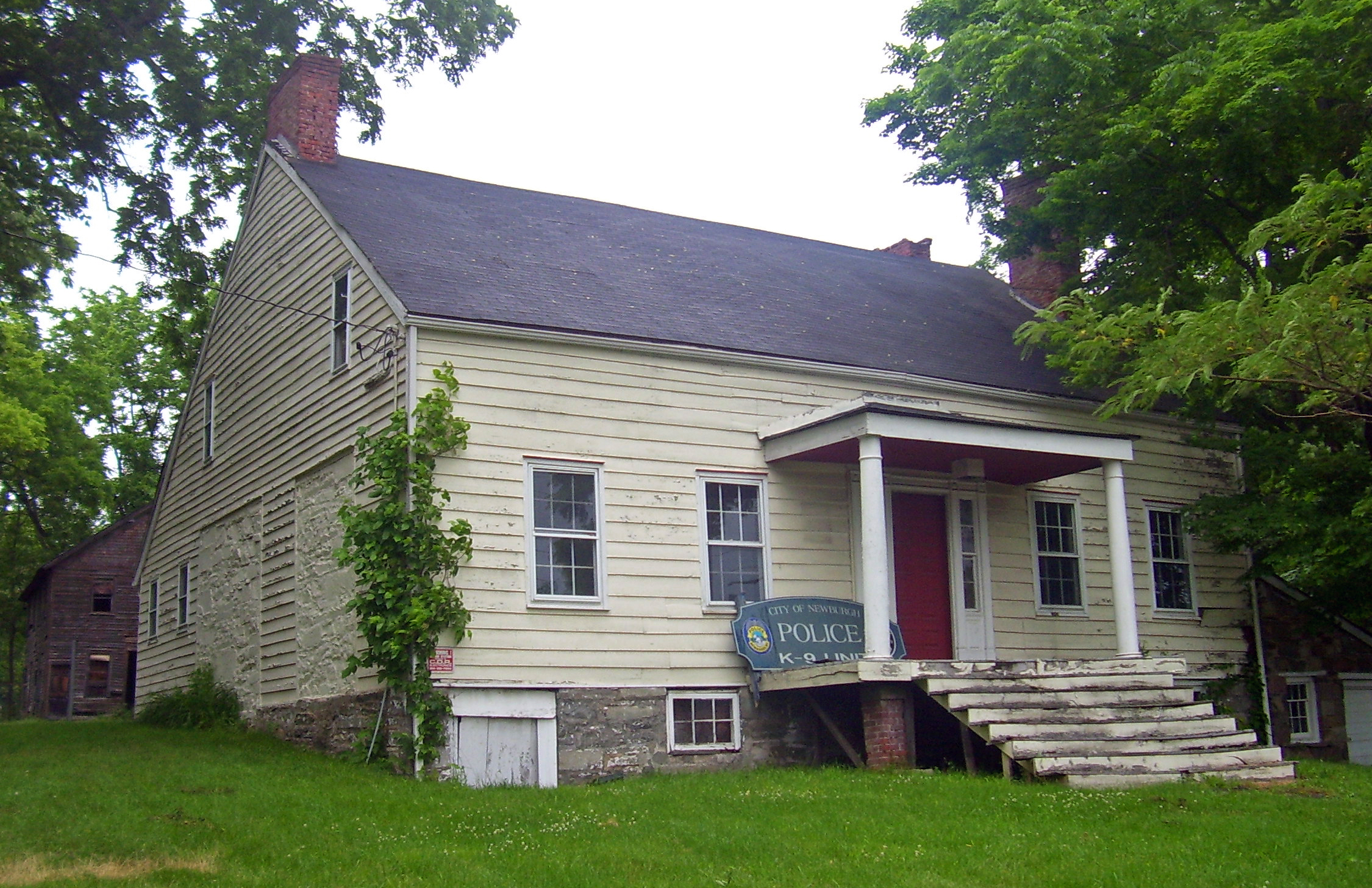- James "Squire" Patton House
Infobox nrhp
name = James "Squire" Patton House
nrhp_type =

caption = Front (south) elevation and west profile with
Newburgh police K-9 unit sign on porch and
barn visible at rear left, 2008
lat_degrees = 41
lat_minutes = 29
lat_seconds = 07
lat_direction = N
long_degrees = 74
long_minutes = 04
long_seconds = 23
long_direction = W
location = New Windsor, NY
nearest_city = Newburgh
area = convert|5|acre|hacite web|last=Krattinger|first=William|title=National Register of Historic Places nomination, James "Squire" Patton House|url=http://www.oprhp.state.ny.us/hpimaging/hp_view.asp?GroupView=102458|publisher=New York State Office of Parks, Recreation and Historic Preservation |date=July 2007|accessdate=2008-09-17]
built = ca. 1790
architect =
architecture =
designated =
added = May 12, 2008
established =
visitation_num =
visitation_year =
refnum = 08000409
mpsub =
governing_body = City of NewburghThe James "Squire" Patton House is located along the brief overlap of NY 207 and 300 in New Windsor,New York ,United States . It is on a five-acre (2 ha) parcel owned by the nearby city of Newburgh, used for police K-9 training.It was built in 1790, although it is not known by whom. Patton, a prominent local farmer and landowner, bought the property as a young man a quarter-century later. It assumed its present form after several additions and renovations in the first 40 years of its existence. In 2008 it was listed on the
National Register of Historic Places .Property
The house is a one-and-a-half-story five-bay frame structure facing the road to the south, on a lot that slopes slightly up to and past it. Its front
facade has four windows and a centrally located entranceway with wooden steps leading up to a coveredporch . The raised foundation is ofmortar edfieldstone with some attempt at anashlar pattern on the corners. The roof is a steeply pitched andgable d. Twobrick chimney s rise from it.A small stone
lean-to was added on to the east at a later date. On the west are two exposed firebacks.The interior has undergone more extensive renovation than the exterior, most recently for use as a police training facility. Beyond the room modified to serve as a
classroom , many of the original finishes, the originalplaster and decoration remains. Thefireplace mantel s haveFederal style Tuscan colonettes withfrieze andentablature , and the unusual rear-facing open-stringer staircase has apyramid alnewel post and ovalhandrail s.There are several contributing resources to the rear of the house. A two-story wooden
barn is believed to date to 1880, and the remains of a stonesmokehouse and another unidentified structure are nearby. The pattern of their stonework is similar to the lean-to on the east elevation, suggesting all three were built around the same time in the early 19th century. An old well andstone wall s complete the original farmstead property.History
At the time of its original construction, the house was a more modest structure, less deep and less wide. In the early 1800s, it is believed, the house was expanded to its present size and the first floor reconfigured more in keeping with the
Federal style houses beginning to come into style. Some traces of this expansion can still be seen on both the interior and exterior.Patton, who had been born and raised a short distance away, bought the house and surrounding farmland that was to eventually reach convert|200|acre|ha by 1830, possibly in 1825. He married around that time and began the house's last remodeling, adding the Federal decorative touches inside and other changes to make it a better hom for his growing family. He distinguished himself in the Newburgh-area business community, helping to establish two banks, and served in several town offices. In 1860 his holdings were valued at $20,000 ($formatprice|inflation|US|20000|1860|2008|r=-3inflation-fn|US in 2008 dollars).
His son William returned to the farm with his own family in 1880 to help his aging father. By 1900, after the older man's death, William and the family and their
servant s had returned to Montgomery Street in Newburgh. He still owned the farm, but his workers lived in the house.James Patton's land were slowly subdivided and sold in the early years of the 20th century. By the time the city of Newburgh acquired the land as part of the expansion of its Lake Washington reservoir to the north, only convert|52|acre|ha were left. Eventually the city converted it to its present use as a police training facility.
Aesthetics
Colonial-era houses in the
Hudson Valley often strongly reflect either English or Dutch building traditions, sometimes combining both, as in theBull Stone House in nearby Hamptonburgh. After independence, the Dutch-style stone houses faded from popularity in favor of more traditional English styles, which the Patton house largely reflects. The one-and-a-half story height, however, is a Dutch style, perhaps the only one that continued to be in use.References
Wikimedia Foundation. 2010.
